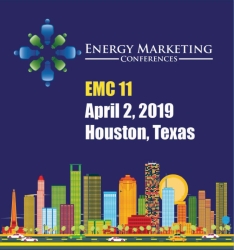|
|
|
|
|
Retail Supplier Seeks Market Enhancements At Dayton Power & Light
The following story is brought free of charge to readers by EC Infosystems, the exclusive EDI provider of EnergyChoiceMatters.com
Interstate Gas Supply (IGS Energy, or IGS) has filed testimony on a non-unanimous stipulation in Dayton Power & Light's electric security plan proceeding
As first reported by EnergyChoiceMatters.com, a hearing has been set on the stipulation after PUCO modified one of the terms of the stipulation in an order addressing the stipulation, which prompted IGS to withdraw from the stipulation
Specifically, the stipulation provided that the Reconciliation Rider (RR), which recovers costs/benefits related to the sale of DP&L's entitlements in Valley Electric Corporation (OVEC), was to be bypassable to customers served by a competitive retail electric service (CRES) provider.
However, as first reported by EnergyChoiceMatters.com, PUCO in 2017 rejected this provision of the stipulation, and made the Reconciliation Rider nonbypassable. PUCO in its order cited concerns with increased shopping at DP&L, and the potential for such shopping to increase the balance under the OVEC reconciliation rider, which would increase the impact on non-shopping SSO customers
PUCO later affirmed this finding in rejecting a request for rehearing from IGS Energy in September 2018, prompting IGS's withdrawal from the stipulation
IGS Energy said in a previously filed notice withdrawing from the stipulation that, "The modification was material and undermined the benefit of the bargain."
IGS has now submitted testimony in advance of the new hearing on the stipulation
In such testimony, IGS seeks various retail market enhancements that are substantially similar to enhancements previously sought in the instant case (prior to the stipulation being formed), or other DP&L cases
IGS sought elimination of the current $5 switching fee for switches to a retail supplier, or alternatively, said that the fee also be applied for a return to default service (which IGS said is already required under the tariff)
IGS sought elimination of the $150 fee to access historical customer usage information
IGS also sought implementation of an unbundling rider. IGS noted that in a recent DP&L distribution rate case, IGS and the Retail Energy Supply Association (RESA) filed testimony identifying approximately $12 million in SSO-related costs proposed for recovery in distribution rates. To reallocate the costs, IGS/RESA had proposed to establish a rider to first credit on a non-bypassable basis $12 million to all distribution customers. To ensure that this elimination from distribution rates was revenue neutral to DP&L, the SSO-related costs were then proposed to be reallocated to SSO service through a bypassable rider
As previously reported from EnergyChoiceMatters.com, PUCO in the distribution case rejected the distribution rider, determining that the rider was a rate adjustment clause, and that the Commission lacks authority to adopt a rate adjustment clause in a distribution rate case
"Given this apparent procedural issued holding back the Commission from
unbundling SSO-related costs, IGS recommends that the Commission establish a rider
here to address the Commission’s concern in Case Nos 15-1830," a witness for IGS testified
IGS also proposed that, under the a supplier consolidated billing pilot at DP&L, CRES providers should purchase receivables from DP&L at a discount
"It is important to keep in mind that DP&L is already assumed that a portion of DP&L’s
distribution-related receivables will not be collected. DP&L is being compensated for its
uncollected distribution receivables through distribution rates and its uncollectible
expense rider. To the extent that CRES providers are required to purchase DP&L’s
receivables at no discount, DP&L’s uncollectible distribution expense will decrease. But
CRES providers will be required to increase their generation-related prices to recover
the cost of collecting DP&L’s distribution receivables. This will result in a windfall to
DP&L and customers that are not participating in the Pilot. While this change alone
would not result in the Stipulation being in the public interest, it would at least mitigate
some of the anti-competitive and anti-consumer elements of the Stipulation, such as the
non-bypassable DMR and the non-bypassable RR," a witness for IGS testified
In regards to the level of the discount, a witness for IGS testified that, "The baseline amount should be DP&L’s embedded uncollectible rate. But this amount
should be increased slightly by 25 basis points to account for the fact that the pilot
does not provide CRES providers with the ability to disconnect a customer. As a
result, it can be assumed that CRES providers will be at a disadvantage in the
collection process and therefore will experience a higher level of write-offs."
IGS also reiterated prior concerns regarding changes to DP&L's collateral requirements, especially as they relate to private companies (see our story here on previously raised similar concerns)
IGS also said that the RR should be bypassable. "Making any
cost recovery related to DP&L’s OVEC entitlement bypassable avoids an
anticompetitive subsidy that would result from collecting generation related costs
through nonbypassable charges imposed on shopping customers," a witness for IGS testified
Witnesses for IGS also testified that the nonbypassable Distribution Modernization Rider (DMR) is improper.
A witness for IGS testified that, "The DMR is described as a rider that will enhance both DPL’s and DP&L's financial
integrity and provide for a more robust distribution service for customers. It is a non-bypassable charge applicable to all distribution customers."
Citing extensive testimony filed by another IGS witness concerning the DMR, a witness for IGS testified that, "my understanding is that the
purpose of the DMR is to support the financial integrity of DPL, the parent company,
not the utility. While DP&L still owned generation assets, I believe that it was able to
somewhat muddy the waters with respect to the need for the DMR. But now that it has
transferred its generation assets, it is clear that the purpose of the DMR is to prop up
the earnings of DPL, which is an unregulated entity."
An IGS witness also testified as follows:
Question: If AES did not provide an equity infusion to DPL and DPL cannot pay its debts,
would that have a negative impact on DP&L and its customers?
Answer: No, it would not. First, it is important to acknowledge that DPL’s debt is primarily held
by out-of-state banks. Therefore, much if not all of the interest and discretionary debt
payments that DPL proposes to make with DMR funds are being sent out of the state
of Ohio. Thus, the real purpose of the DMR is to syphon [sic] off above-market revenues
from the already economically challenged customers in the Dayton region to pay a few
bankers out-of-state bankers and their shareholders.
Case No. 16-0395-EL-SSO
ADVERTISEMENT Copyright 2010-16 Energy Choice Matters. If you wish to share this story, please
email or post the website link; unauthorized copying, retransmission, or republication
prohibited.
Says DMR Rider "Syphon[s]" Above-Market Revenues To "Out-Of-State Bankers"
February 13, 2019
Email This Story
Copyright 2010-19 EnergyChoiceMatters.com
Reporting by Paul Ring • ring@energychoicematters.com
NEW Jobs on RetailEnergyJobs.com:
• NEW! -- Chief Operating Officer -- Retail Supplier
• NEW! -- Retail Energy Channel Manager -- Retail Supplier
• NEW! -- Energy Sales Broker
• Business Development Manager -- Retail Supplier -- Houston
• Business Development Manager
|
|
|
|









